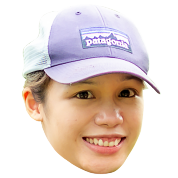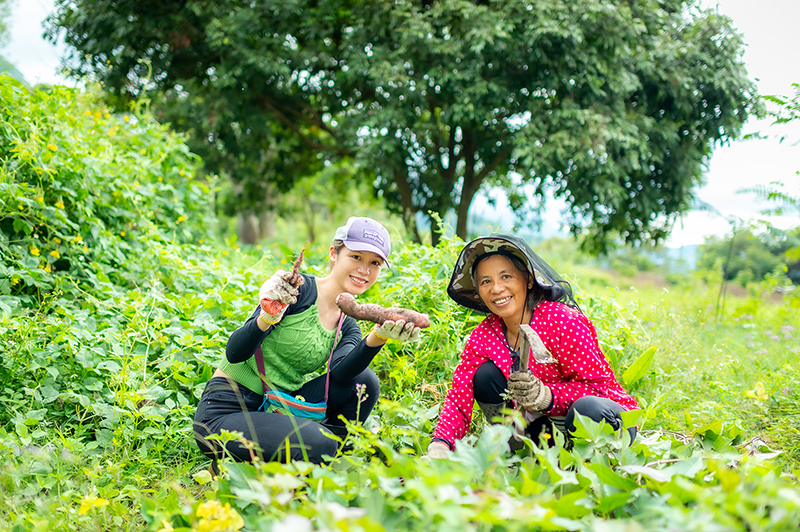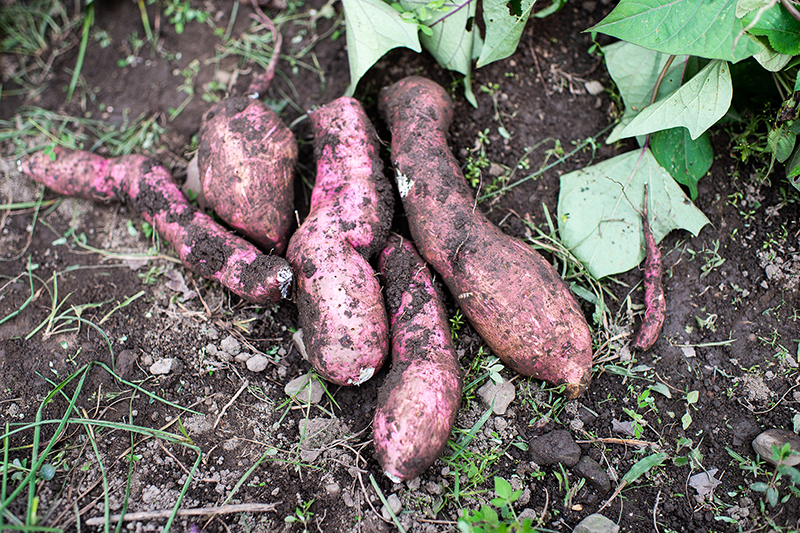While talking about culture, the instructors also shared their history of migration. Can you share with us the Bunun story?

According to the Bunun legend, we originated from Yushan, where 5 brothers migrated in different directions and thus formed the 5 major clans. Based on oral history and by cross-referencing with other indigenous groups, it is understood that the Bunun used to live on the plains and had once traded with the Taiwan plains indigenous?peoples and Tsou peoples as well as engaged in conflicts with them. But as the foreign regime moved in, the Bunun relocated further up the mountains and, for the past 200 years, resided mostly in the mountains in Nantou, Kaohsiung, Hualien, and Taitung.
I learned of our history of migration through family stories and my own research, my cousins would also study the history and share their findings with us. But what I am particularly interested in is the history of my own clan, the Ispalakan of the Isbukun Community.

Instructors mentioned a few times about how winemaking, and sorting of the crops would be occasions for gossip, do you have similar experiences in the Bunun community?
 At Mahavun Community, there is Lusan Uvaz, the Baby’s Day. We would perform the mat-haulus ceremony on this day by putting on the child a necklace, which is actually a rite of passage including naming and a blessing ceremony of sticking the ngan (acorus root) on the child’s forehead. It is practiced between May to June each year to celebrate the newborns of the year and is an opportunity to introduce new souls to the community. When prepping for the ceremony, for example making necklaces with the hard Adlay millet, preparing the ngan and traditional clothing, and getting ready to slaughter a pig, all of which are occasions when our people would exchange news and information.
At Mahavun Community, there is Lusan Uvaz, the Baby’s Day. We would perform the mat-haulus ceremony on this day by putting on the child a necklace, which is actually a rite of passage including naming and a blessing ceremony of sticking the ngan (acorus root) on the child’s forehead. It is practiced between May to June each year to celebrate the newborns of the year and is an opportunity to introduce new souls to the community. When prepping for the ceremony, for example making necklaces with the hard Adlay millet, preparing the ngan and traditional clothing, and getting ready to slaughter a pig, all of which are occasions when our people would exchange news and information.
What have you noticed about the economic predicament and development in indigenous communities?
 We have a production and marketing group and a Multiple Employment Development Program at Luluna, as well as things like camellia oil, coffee, and innocuous and organic agriculture, it is better when you have a production and marketing group. When the brand has yet to be known and channels are few, it is more difficult for farmers in the mountains as they tend to be exploited by wholesalers. Luluna has two main economic crops, the grape and greenhouse crops. The greenhouse development has been promising in the past decade, and the quality of production has been more stable. Aided by the climate, we have more varieties of fruits and vegetables, and anything we plant grows rather well. Other than agriculture, we have also been planning tourism, with accommodations and tourism, coupled with resources from the public sector, we should be able to develop a tourism business.
We have a production and marketing group and a Multiple Employment Development Program at Luluna, as well as things like camellia oil, coffee, and innocuous and organic agriculture, it is better when you have a production and marketing group. When the brand has yet to be known and channels are few, it is more difficult for farmers in the mountains as they tend to be exploited by wholesalers. Luluna has two main economic crops, the grape and greenhouse crops. The greenhouse development has been promising in the past decade, and the quality of production has been more stable. Aided by the climate, we have more varieties of fruits and vegetables, and anything we plant grows rather well. Other than agriculture, we have also been planning tourism, with accommodations and tourism, coupled with resources from the public sector, we should be able to develop a tourism business.
How would you recommend urban indigenous youth approach indigenous cultures? What have you learned so far?

Take part in camps like the one we did this time, something natural and not set up. For example, simple things like patrolling the field with Yumi, nothing fancy yet authentic. Or you can take part in those “very indigenous” events, but you have to understand that those are set up for the program, it is not everyday life. Some people need programs like that to quickly form a bond or an impression, doesn’t matter either way, but gradually you have to build up that kind of sensitivity.
Next is observation. People who stay in indigenous communities stay because they work here and because they do not like living in the city all that much. So, before you ask questions, try to observe “what is it that they spend time doing”. I have also lived in the mountains and have been asked some ridiculous questions by tourists before. It is alright to ask the wrong questions, you are outsiders, and it is only natural for you to ask silly questions, just apologize if you offended

What is your takeaway from the time spent here?

I really identify with the way Voyu, and his people live their lives in the indigenous community. They do not talk fancy, and they show their guests how they live their life in a very Tsou way. This is not easy, especially for someone like me who lives in the city and works to advocate indigenous issues.
When I asked Voyu when and why did he recover his indigenous name? His answer was it was only natural. I find this fantastic. His work involves culture revitalization, and he recovers his indigenous name. As an indigenous person, need he justify why he is using his own name or getting to know his land? He is the best example to call on all indigenous youth with atypical life experiences to learn about know themselves. He is a wonderful example, to me, he is living his identity. Although I recovered my indigenous name a long while back, I did it for my family. Voyu did it because he wanted to. He spoke his indigenous language at home and lives in the indigenous community, whereas I spent my time between the city and the indigenous community. it took me a long time to go from recovering my indigenous name to actually identifying as indigenous. when you compare us, you see that we are different.
Also, it really is quite far out from anywhere here. My indigenous community is only 10 mins from the nearest 7-11. But here, life is very simple.




